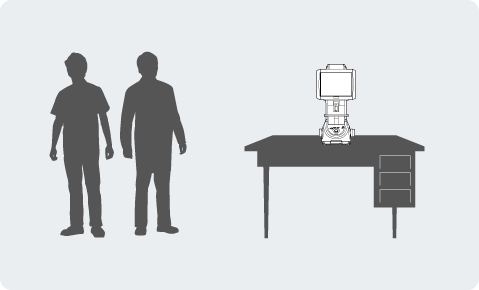Measurements Grouped by Work
Research and Development

Highly accurate digital measuring instruments are often used in research and development. Some of these measuring instruments can perform highly accurate measurements in units as small as 10 nm. However, prioritising top-of-the-line accuracy is not appropriate. In selecting a measuring instrument, consideration of the purpose and the required accuracy is critical.
Before using a measuring instrument, check the instrument’s characteristics and functions, and then perform measurement according to the correct procedure and under correct management.
Examples of Measuring Instruments Used
- Measuring microscopes
- Optical CMMs
- Profile measurement systems
- Coordinate measuring machines
- Roughness meters
- X-ray CT machines
- Roundness measuring instruments
Key Points for Selecting a Measuring Instrument
- Assume that the development tasks will change, so consider in advance whether the instrument is intended for general use or for a specific task.
- There are many situations in which measurements must be performed on multiple experiment samples, so a measuring instrument that can perform measurements automatically and quickly is useful.
- Precision measuring instrument that require specialised knowledge and technical skill to operate can compromise the availability of measurements. It is important to select a measuring instrument that is as easy to use as possible in order to enable even new users to perform measurements easily.
Precautions for Measurements
- Precise measurements must be performed in an environment with a constant temperature, humidity, and cleanliness, such as in a thermostatic chamber. If temperature regulation is difficult, it is necessary to calculate errors based on the thermal expansion coefficient and to determine the value at the reference temperature.
- Most measuring instruments are expensive, so careful handling and management are critical. Select an individual to be in charge of managing the measuring instrument beforehand, and establish handling procedures that are shared among all users of the instrument. After use, clean the instrument according to the cleaning procedure.
Additionally, because most often a limited number of measuring instruments will be used by multiple individuals, a reservation system for using the instruments is common. Such procedures should be put in place when adopting the measuring instrument.


